Connecting an LED Strip to a Power Supply: Step-by-Step Guide
Table of Contents
High-quality LED strips, which predominantly operate at low voltage, require a power supply connection to function properly. This power supply is often called an LED driver, given its role in promoting the LED strip’s operation. Moreover, it is also termed an LED transformer since it modulates the main power supply of either 220VAC or 110VAC to a manageable 12V or 24V.
This guide provides a step-by-step tutorial on connecting LED lights to a power source.
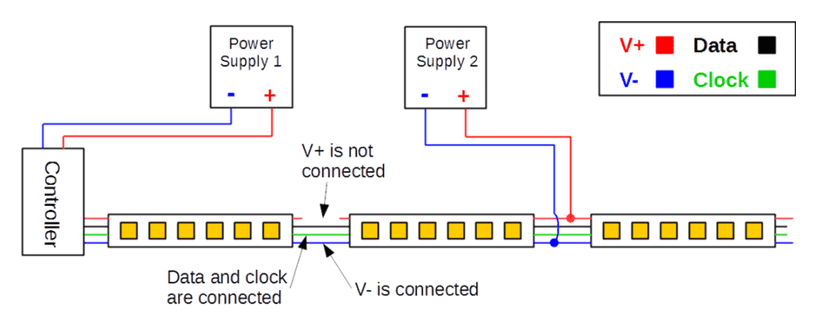
Power Supply and LED Strip Connections
A Power Supply Equipped with a DC Connector
The LED strip has a DC female connector, which matches the DC male connector on the power supply. This power supply is commonly known as a power adapter.
LED Strip Presenting Bare Wires
If your LED strip merely contains bare wires, you must purchase the requisite accessories to convert these wires to DC connectors and establish a connection.
LED Strip Devoid of Wires Post Cutting
After cutting an LED strip, you might ponder how to connect it to a power supply plugging into an outlet. In this case, you can use a solderless wire connector or solder a DC female connector to establish a connection. The power adapter’s AC plug can be inserted into an outlet, providing power to the LED strip lights. For minor projects, this setup proves to be quite efficient and apt.
LED Strip Equipped with a DC Connector
In a scenario where the LED strip is fitted with a DC female connector and the power supply houses a DC male connector, you simply need to plug the DC female into the DC male connector to establish a connection.
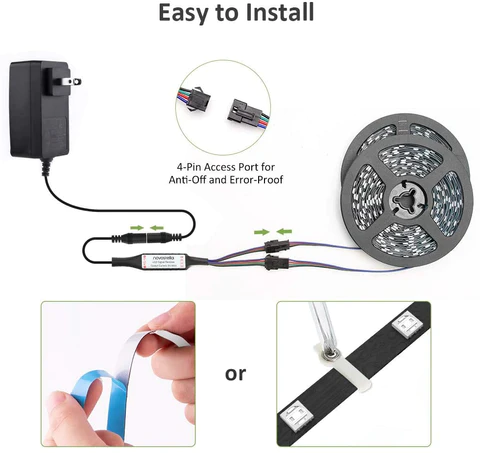
Assessing Voltage and Power
Initially, verify the operational voltage of your LED strip. Typically, LED strips function at either 12V or 24V. Matching the LED strip’s operating voltage with your power supply’s output voltage is essential.
Next, determine the LED strip’s total power consumption. This can be done by multiplying the power consumption per meter of the LED strip by its total length in meters.
Lastly, adhere to the 80% rule. Ensure that the total wattage of the LED strip is equal to or less than 80% of the power supply’s wattage. This practice will contribute to a longer lifespan for your power supply.
Open-Wired Power Supply
Typically, an open-wired power supply is designed to be water-resistant.
1. LED Strip Exhibiting Open Wires
Connecting the LED strip’s wires directly to the power supply’s cables is possible.
Proceed by intertwining the two red wires and, after that, secure them using a wire nut. Perform the same procedure with the black wires.
Remember that matching the red wire to the red one and the black wire to the black counterpart is crucial. If wires are incorrectly connected, the LED strip will fail to function.
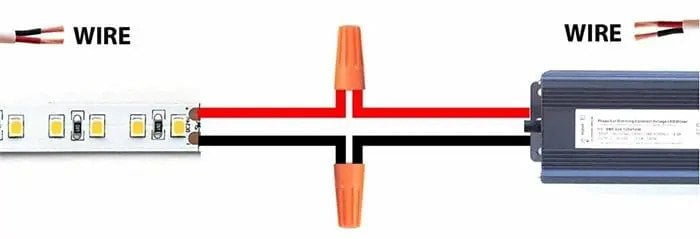
Alternatively, the wires can be connected using a connector that doesn’t require soldering.
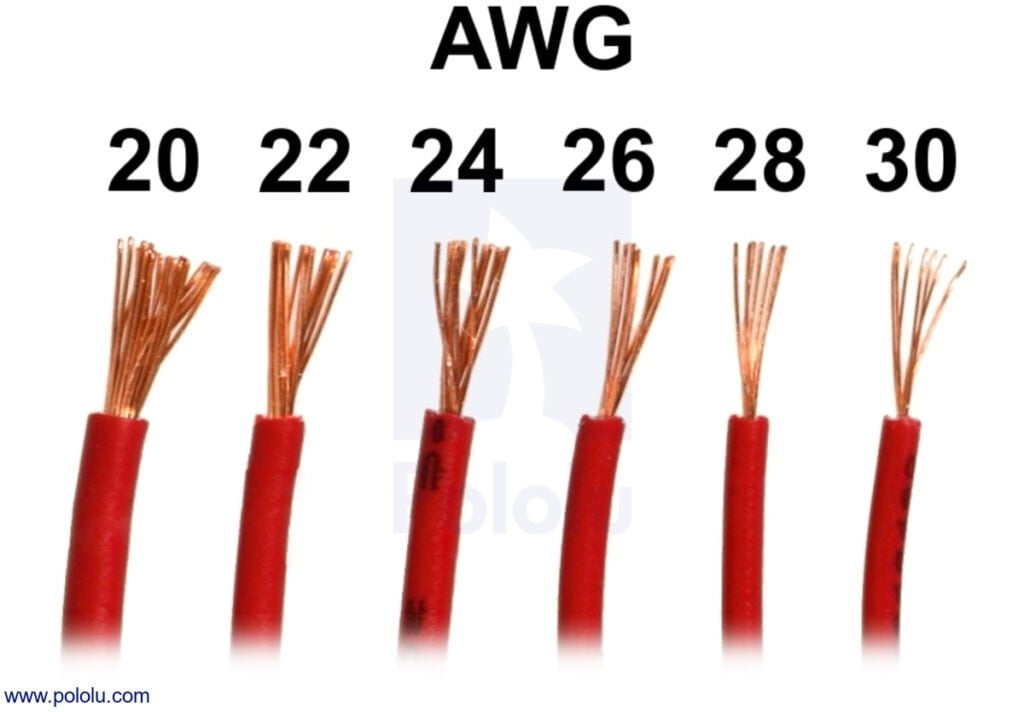
2. LED Strip Devoid of Wires After Cutting
If you have an LED strip that’s been cut and no longer has any wires, you can attach wires to the LED strip either by soldering or by using solderless LED strip connectors. Subsequently, you can apply the technique mentioned to link the LED strip to the power supply.
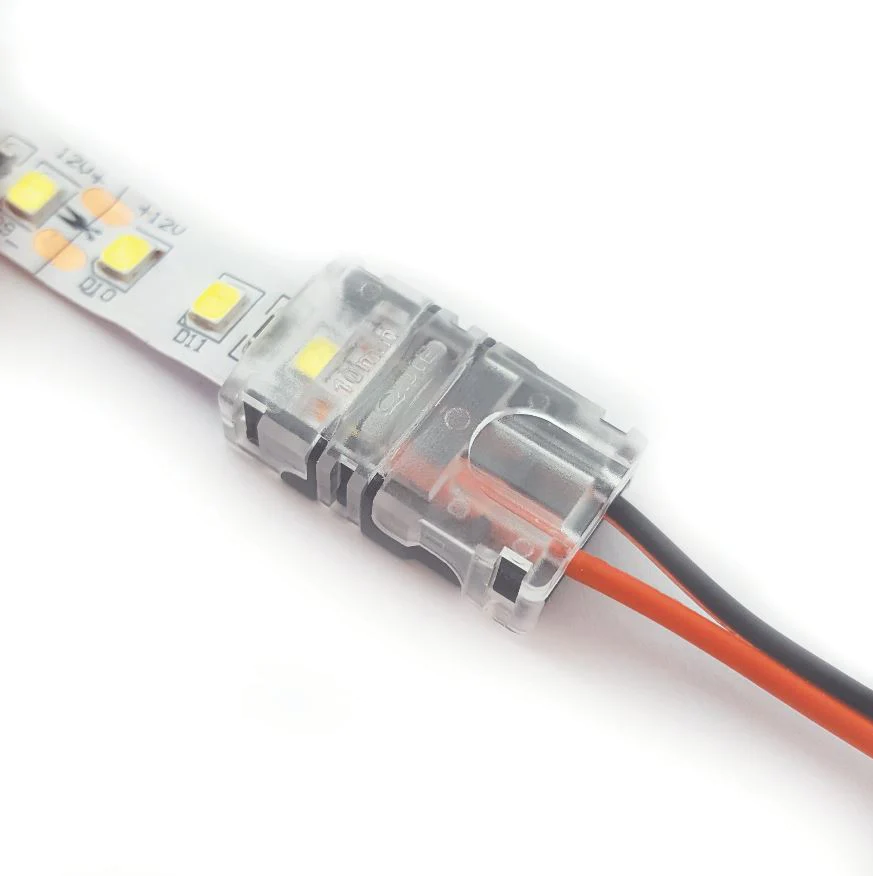
Wireless Power Supply
A wireless power supply is typically a non-resistant power supply equipped with terminals for wiring connections.
The operation of this power supply requires a screwdriver as the terminals are secured to the wires with screws.
Step 1: With a screwdriver, unfasten the screw located on the terminal block.
Step 2: Position the LED strip’s wire into the matching slot.
Step 3: Following the placement of the LED strip wires, secure the screws using a screwdriver. Conduct a manual pull test to ensure the screws are sufficiently tightened.
Step 4: Following the same procedure, connect with the AC plug.
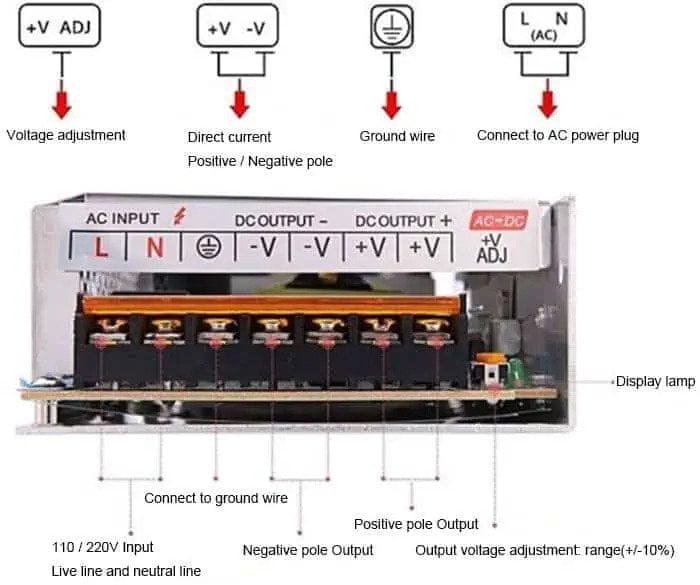
Is it possible to link multiple LED strips to a single power supply?
Indeed, linking several LED strips to one power source is possible. However, it’s crucial to ascertain that 80% of the power supply’s wattage surpasses the cumulative wattage of the LED strips.
Series Connection: Connecting numerous LED strips in a series might lead to voltage drop issues. The further the LED strips are from the power source, the dimmer they become.
Parallel Connection: Uneven brightness across LED strips is undesired. Multiple LED strips can be connected in parallel to the power supply to avoid this.
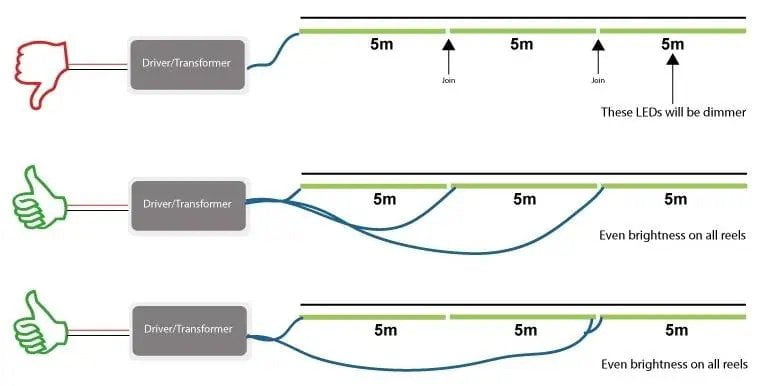
Final Thoughts
Linking LED strip lights to a power supply is a straightforward task with the right tools and knowledge. Whether setting up LED strips for decorative lighting or as part of a comprehensive home automation endeavour, this blog will guide you towards a safe and efficient installation.
MyLikeLed is a producer of top-notch LED strips and LED neon flex. All our offerings undergo stringent testing in advanced laboratories to guarantee peak quality. Plus, we provide custom options for our LED strips and neon flex. If you seek a superior LED strip and LED neon flex, contact MyLikeLed immediately!
FAQs
Yes, you can connect multiple LED strips to one power supply if the power supply can handle the combined wattage.
Make sure you add up the total wattage of all the strips and ensure it doesn’t exceed 80% of your power supply’s maximum output to avoid overheating.
Using the wrong power supply can damage your LED strip or cause it not to work.
A voltage that’s too high can burn out the LEDs, while a voltage that’s too low will cause dim lighting or flickering. Always double-check voltage and wattage requirements.
No, you usually don’t need a resistor, but you may need a controller if your LED strip has special features like color-changing (RGB).
Simple single-color LED strips connect directly to the power supply, but RGB or smart LED strips require a controller between the strip and the power source.
The side marked with + or a power input symbol connects to the power supply.
Look for small labels or arrows printed on the strip itself; these indicate the correct side for power connection.
Yes, it’s safe to cut the LED strip, but only at the marked cutting points.
Most LED strips have clear, evenly spaced cut lines (often with small scissor icons) where you can safely cut without damaging the rest of the strip.

Hi, I’m Xylia Xiong, a sales professional with 14 years of experience in the LED strip light industry. I specialize in providing tailored solutions, leveraging my expertise in LED products and the latest industry trends. Known for effective communication and problem-solving, I’m dedicated to helping lighting manufacturers, importers, and distributors achieve their goals.
Let’s work together to create customized solutions that exceed expectations.
Related Posts

The Best LED Strip Lights You Can Buy Right Now

Comparing WS2811 Vs WS2812B: Key Differences


